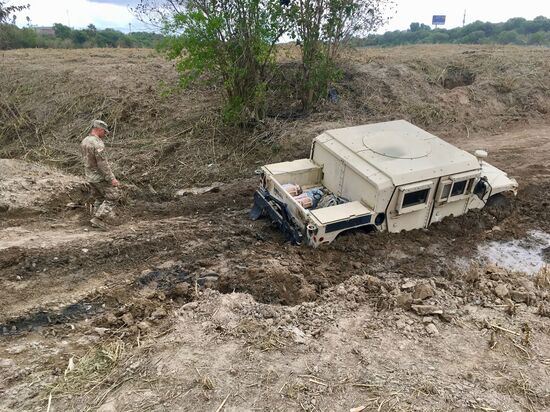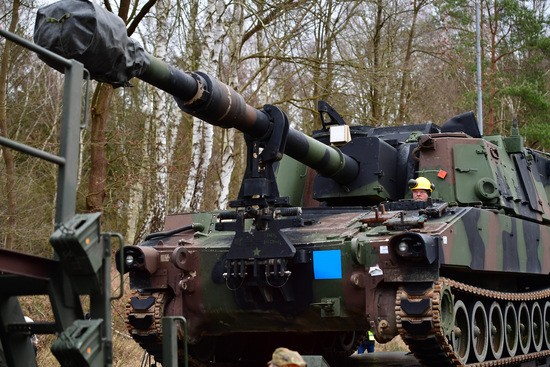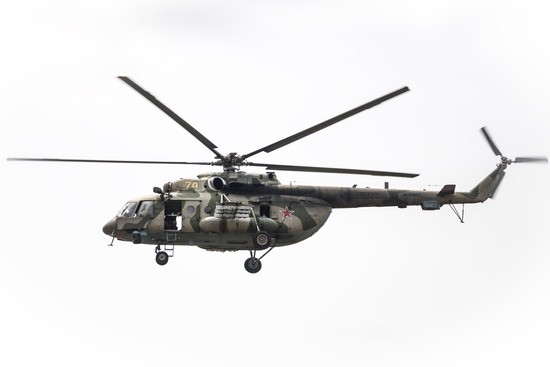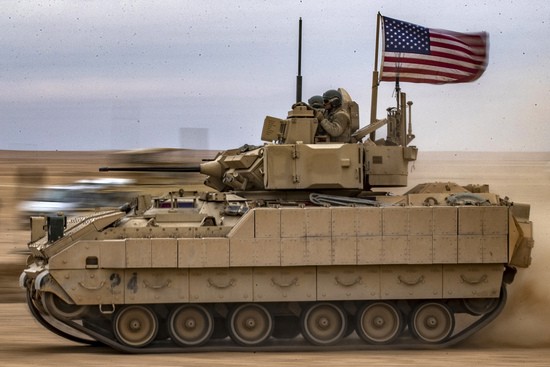Ukraine update: American artillery headed to Ukraine
This post was originally published on this site
Have you read Mark Sumner’s Ukraine update on luck on the battlefield? It was excellent! I sure do love a well-written history education!
With rain fixing the battlefield in place, last night’s big news was the United States’ announcement that its next big shipment was being formulated. Both the $800 million aid package and the $100 million in Javelin anti-tank missiles will be fully delivered by the end of the week, thus the Pentagon is now formulating its next package, this one delivering $750 million worth of equipment. The U.S. has already donated equipment worth $2.4 million. This package does not require congressional approval. Here are the two headliners of this new package:
HMMWV (Humvee)
As I previously wrote, Humvees are a fantastic addition to the Ukrainian army, and the United States has thousands of them sitting in storage as they get replaced by a new-generation vehicle. Ukraine already fielded the vehicle, so they have expertise running and maintaining them. It’s not a new system, and given that Humvees were included in the previous $800 million package, this is adding to an existing and growing stockpile.
The Humvee will be far more mobile than some of the rickety commandeered civilian vehicles currently used by many Ukrainian units, and could be of particular use to Ukrainian special operation forces operating behind enemy lines at night. But to be clear, they’re not immune to mud, as this particular crew found out while patrolling the Rio Grande valley down at the Mexican border.

Humvees can be modded out to no end—including mounting anti-tank missiles for fast shoot-and-scoot ambushes. Ideally, every Ukrainian infantry squad would have several of these. It’s impossible to deliver too many of them.
But even more exciting …
ARTILLERY

I’ve argued that the United States should facilitate the transfer of the nearly 1,000 Soviet-era 2S1 Gvozdika self-propelled artillery guns in NATO stock, as Ukraine already operates them in its arsenal. Remember, having to learn a new system delays deployment and makes it exponentially harder to maintain and support. While the United States doesn’t have any of these in its arsenal, it can “backfill” allies with more modern western NATO-standard options.
At yesterday’s press gaggle, White House Press Secretary Jen Psaki said: “We’re working to provide the Ukrainians with artillery systems that they have recently requested in conversations between our governments. And we’re working to provide them with artillery from U.S. stocks but also to facilitate the transfer from other allies and partners as well, as we did with the S-300 and the backfill of the Patriot battery system.”
This is quite the surprise. Yes, the U.S. is working on getting Ukraine the same systems they’re already familiar with, but—and this is critical—they’re also sending American artillery. Any fears about sending “heavy” equipment or “offensive” equipment have evaporated. The only question now is, “Can Ukraine make use of this ASAP?” The United States has thousands of M109 self-propelled howitzers in storage, and the system is ubiquitous in NATO armies, many of which are in the process of replacing them. Germany alone has reportedly phased out 570 of them, Italy 221, the Netherlands 126, and Belgium around 100. If Ukraine has to learn any new system, with dramatic potential impact on the battlefield, this is it. Nothing else comes close.
The M109 (and all NATO heavy artillery) aren’t compatible with the munitions currently in Ukrainian hands. A whole new logistical chain will have to be built to support these in the field. On the other hand, it allows Western NATO countries to help supply ammunition, including smart rounds like the GPS-guided Excalibur artillery shells. Ukraine has a home-grown laser-guided artillery round it has used to great effect (examples here).
These guided shells are an even bigger game changer than the Switchblade suicide drones we’re so excited about. Ukraine is only getting 100 of the tank-busting Switchblade 600, likely because it’s a new weapon and the U.S. simply doesn’t have many in its arsenal. But laser-guided artillery munitions? Thousands are sitting in American and allied storage depots. The Excalibur has a range of 22 to 35 miles depending on variant, and is designed specifically to be used in civilian areas (like cities) where minimizing collateral damage is of paramount importance. Imagine how useful that will be in liberating cities like Kherson and Melitopol, and hopefully more down the line. New variants have additional laser guidance.
And if you’re fantasizing about taking out murderous Russian artillery, the 2S1 Gvozdika howitzers that make up the bulk of Russia’s heavy artillery have a range of 9 to 14 miles. Russian GRAD MLRS have a range of 12 to 19 miles, depending on the ammo. All of those would be well within range of guided 155mm rounds. Dumb rounds have a range of 8 to 13 miles depending on variants.
The catch? Cost. A dumb 155mm NATO-standard artillery shell costs around $1,000. The Excalibur costs $112,000 per round. So a mix of smart and dumb shells is the most likely outcome. Germany has its own guided 155mm shells, the SMArt 155 laser-guided artillery round (17 mile range), which could also find its way into Ukrainian hands if Germany ever gets its head out of its ass and commits fully to the war effort.
Now check this out:
Nah, these M109s and supporting vehicles aren’t going to Ukraine. This is American gear, deploying to Poland or one of the Baltic nations as part of NATO’s reinforcement of its eastern flank. But soon, hopefully, one of these will truly be Ukraine-bound.
Wait, did someone say something about helicopters?

Original reports claimed that the Pentagon was looking at adding attack helicopters to this package. Not long after, the helicopters were struck from the list. Considering that they were talking about Mi-17 transport helicopters modded with attack systems, that makes sense. First of all, any such modification would take time (and could be included in a future package, ready to roll), and second of all … the United States has Russian-built helicopters? Turns out yes, from back in 2011:
In a turnabout from the Cold War, when the CIA gave Stinger missiles to Afghan rebels to shoot down Soviet helicopters, the Pentagon has spent $648 million to buy or refurbish 31 Russian Mi-17 transport helicopters for the Afghan National Army Air Corps. The Defense Department is seeking to buy 10 more of the Mi-17s next year, and had planned to buy dozens more over the next decade.
The 2014 Russian annexation of Crimea would’ve ended such purchases, but there are reports that the U.S. Army operates the helicopters for its special forces, obscuring their activities in locations where Soviet-era gear predominates. And it turns out that the U.S. already handed over five Mi-17s to Ukraine that previously belonged to the Afghan military. I couldn’t find information on what might be left in U.S. hands, but it’s clearly something if they were under consideration.
Still, without air cover, helicopters are terribly vulnerable to Russian aircraft and missile systems, and especially so on the Donbas front, close to Russia’s one zone with bona fide air superiority.
And the ‘Coastal Defense Drones’?
The Washington Post reported that “coastal defense drones” could be part of the package. No clue what that’s about. Never heard of such a thing, and some quick googling came up with nothing. I honestly don’t think they exist, and I’m guessing the reporter misunderstood (like calling a howitzer a “tank”). So … maybe regular drones? Or more Switchblades? More of those would be nice.
Next on the wish list?
Now that the taboo against “heavy” weapons is shattered, let’s get the M2 Bradley Infantry Fighting Vehicle into Ukrainian hands. It is being phased out of the U.S. Army, and there are thousands available for gifting.

The Bradley is nowhere near as difficult and complicated to maintain and supply as a modern combat tank, it can be mounted with tank-killing missile systems, it can protect infantry during the kind of open ground combat we’re seeing in south and east Ukraine, and it can more safely transport infantry to combat zones than softer-skinned vehicles (including through defensive Russian artillery barrages). To get a sense to how much simpler the Bradley is, the training program to maintain it is 12 weeks, while it’s six months for the M-1 Abrams tank. And the Bradley uses regular diesel, not jet fuel like the Abrams.
(In case you’re wondering, a U.S. Army artillery mechanic has a 15-week training program. Maintaining the Bradley is simpler than the M109 system. It does mean fielding the M109 has a real training curve.)
Wednesday, Apr 13, 2022 · 1:16:42 PM +00:00
·
Mark Sumner
Information is everything. Watch what these MLRS systems are able to do when they have an accurate target. The systems firing the missiles themselves are not even in sight of the target, but thanks to the to-the-meter information provided by the drones, they are able to direct the fire from miles away with absolutely astounding accuracy.
Plus … Ukrainian music.
Wednesday, Apr 13, 2022 · 1:19:31 PM +00:00
·
Mark Sumner
And speaking of information, these images from commercial satellite imagery firm Maxar show some incredible detail. They give a sense of just how much information U.S. intelligence is able to provide the Ukrainian defense ministry when it comes to the movement of Russian forces.
Despite the label that the forces shown here are moving toward Ukraine in western Russia, the fourth image actually appears to be inside of Ukraine, southeast of Kharkiv.
